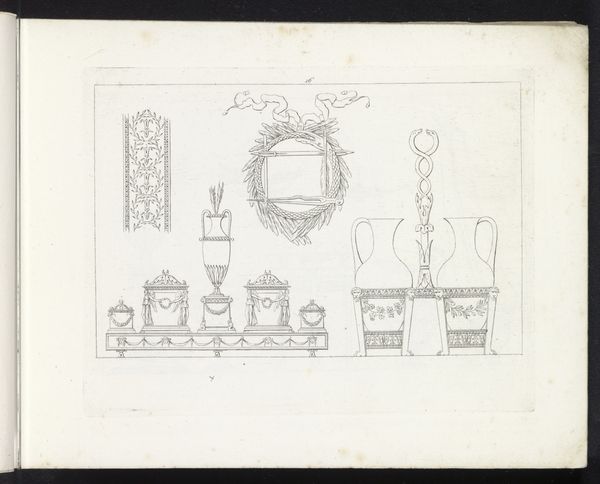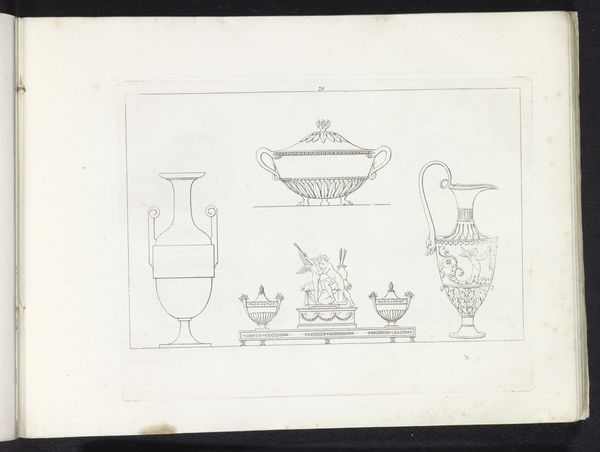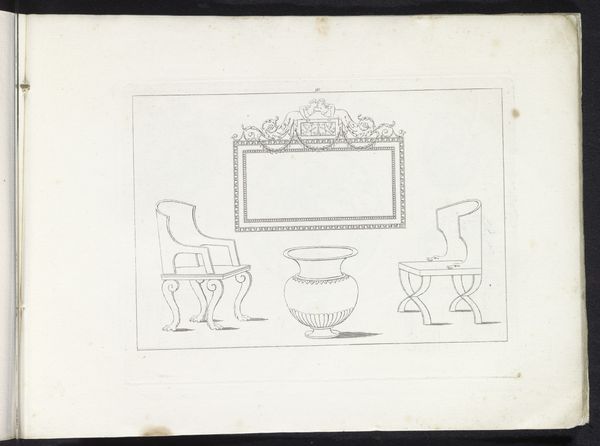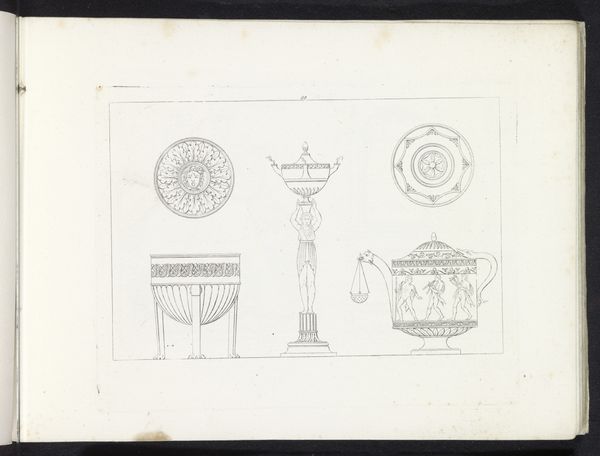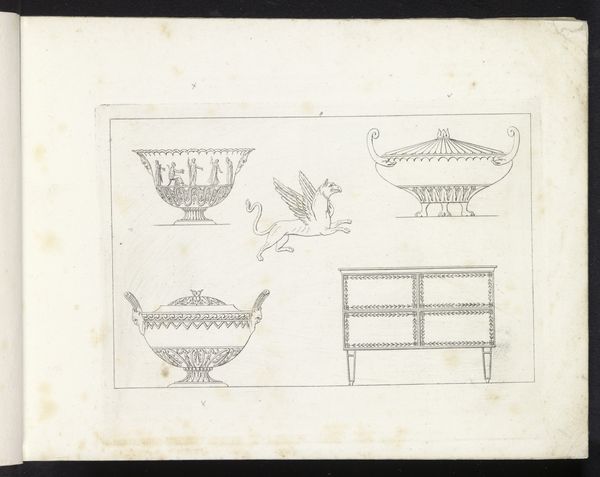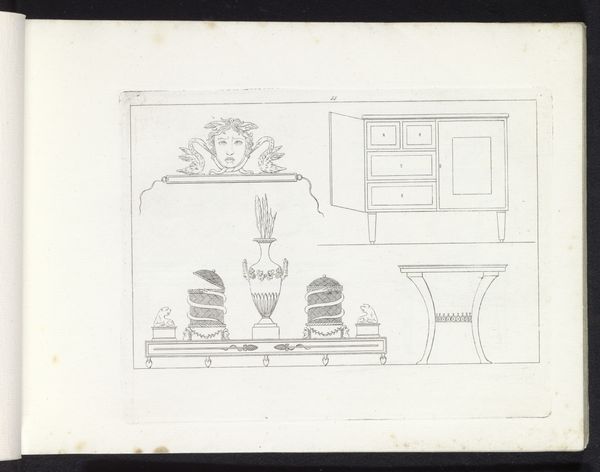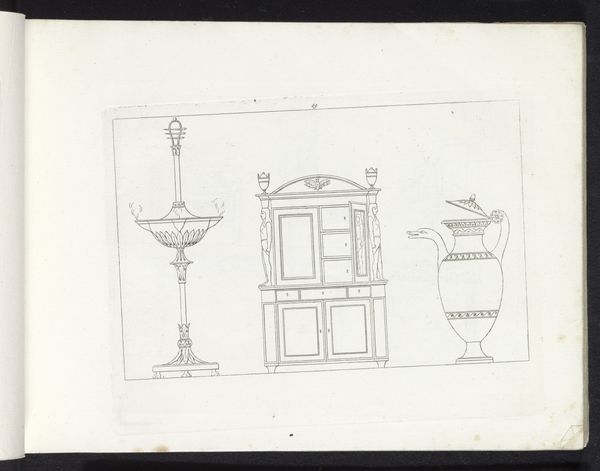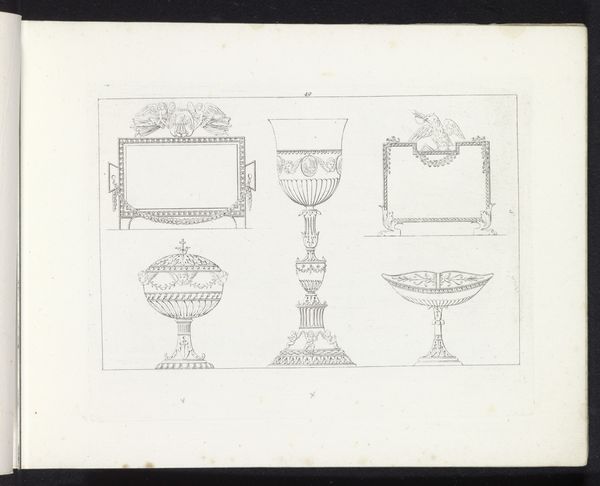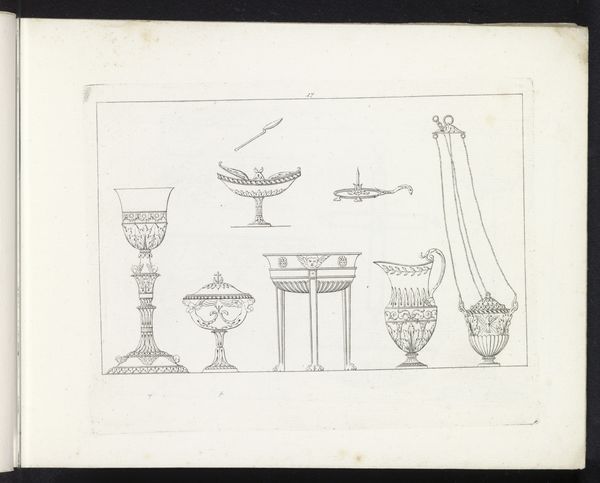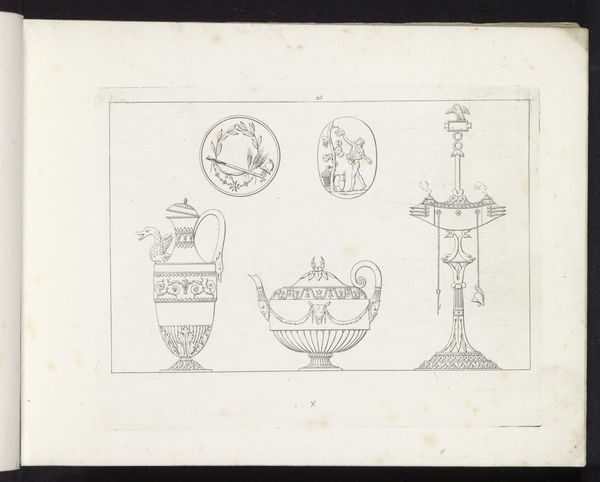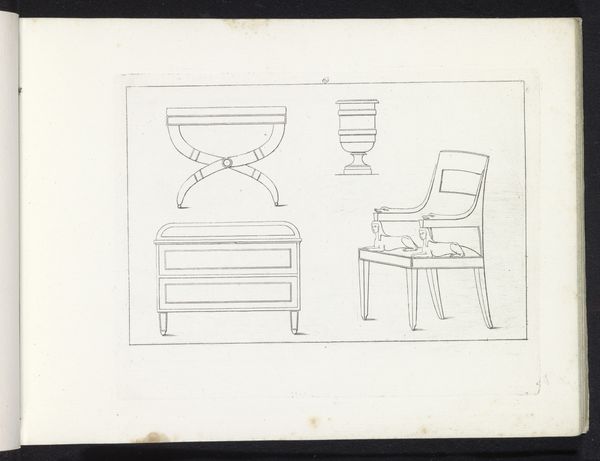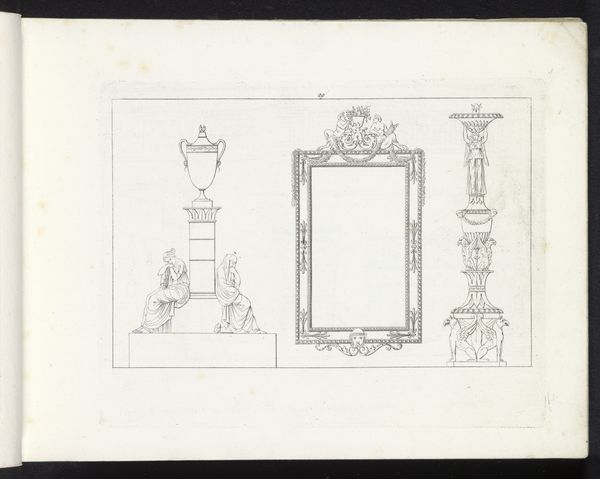
drawing, ink, pen
#
drawing
#
neoclacissism
#
form
#
ink
#
geometric
#
pen-ink sketch
#
pen
#
academic-art
Dimensions: height 165 mm, width 216 mm
Copyright: Rijks Museum: Open Domain
Curator: Let’s discuss this pen and ink drawing, “Drie Urnen,” by Pietro Ruga from 1817. What grabs your attention first? Editor: It's the stark simplicity, almost skeletal in its presentation. The urns feel less like vessels and more like studies in form, flanked by what seems to be a tomb, drawn with precise lines on the page. What's your perspective on the drawing, considering its creation in 1817? Curator: From a materialist lens, it's fascinating to consider the artist’s process, the choice of ink and pen. What kind of pen? What source of ink? These choices dictated the line, and line becomes form here. But also, look at the composition itself. It presents objects designed for ritual, specifically funerary. Think of the societal function: Who commissioned this drawing? Why? Was it a study for a larger project, or an object in itself intended for sale? The material circumstances surrounding the creation speak volumes. What was the mode of labor for artists producing academic drawings during the 19th century, who consumed it, and why? Editor: That makes me see this not just as an artwork, but as a document of production and cultural values. What would its purpose be? What were artists in that time expected to do and make? Curator: Exactly. And how might that impact our interpretation of the work? It prompts questions about the commodification of mourning and artistic labor. Think about who would've had the resources and inclination to own such a drawing in 1817. Their social status shaped both the creation and reception of "Drie Urnen." It may speak of Neoclassicism but in essence we have an early form of industrialization and the modes and forms of representation during that era. Editor: So, by looking at the materials, labor, and consumption around the drawing, we understand much more about it and the society it came from. That makes it far more engaging. Thanks!
Comments
No comments
Be the first to comment and join the conversation on the ultimate creative platform.
